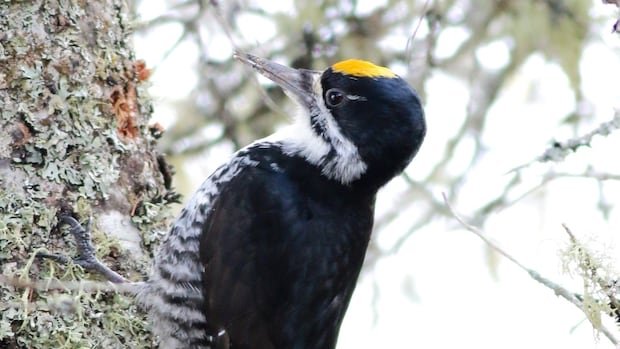As wildfires ravage the forests of New Brunswick at unprecedented levels this year, experts suggest that the aftermath is altering bird habitats, forcing some species out while opening up opportunities for others. Joe Nocera, a professor of forestry and environmental management at the University of New Brunswick, explains that disturbances in forests result in winners and losers, with woodpeckers emerging as beneficiaries in this scenario.
Amy-Lee Kouwenberg, an associate director at Birds Canada, highlights that woodpeckers thrive in burned areas due to the abundance of standing deadwood, which attracts wood-boring insects for them to feed on. While wildfires are destructive, they play a natural role in forest ecosystems by clearing underbrush and creating habitats that support a broader range of species, thereby enhancing biodiversity over time.
Certain bird species, such as the black-backed woodpecker, are well-suited to burned forests and provide nesting sites that benefit other birds like chickadees and nuthatches. However, species like the Canada warbler, wood thrush, and Bicknell’s thrush, reliant on dense forests, face heightened vulnerability due to fire-related habitat loss.
Karen Hodges, a conservation ecologist and biology professor at the University of British Columbia, points out that wildfires can disrupt bird foraging, migration patterns, and nesting success, potentially leading to fatalities. To mitigate wildfire risks, Hodges advocates for prescribed burning as a preventive measure to restore natural wildfire patterns and reduce the rapid spread of fires.
The Acadian forest in the Maritimes historically experienced low-intensity fires that aided in its resilience, but recent wildfires have escalated in intensity, burning both surface vegetation and canopy. This change poses challenges for forest regeneration, with fires in New Brunswick already surpassing 300 this year, burning over 2,500 hectares—a staggering 1,239% increase in burned hectares compared to the previous year.
Efforts to manage wildfires through prescribed burns have seen some success, with 23 recorded prescribed fires in Canada this year as of September 4, covering nearly 1,800 hectares. While wildfires present ecological shifts with winners and losers among bird populations, understanding and implementing sustainable forest management practices are crucial for preserving biodiversity and ecosystem health.

